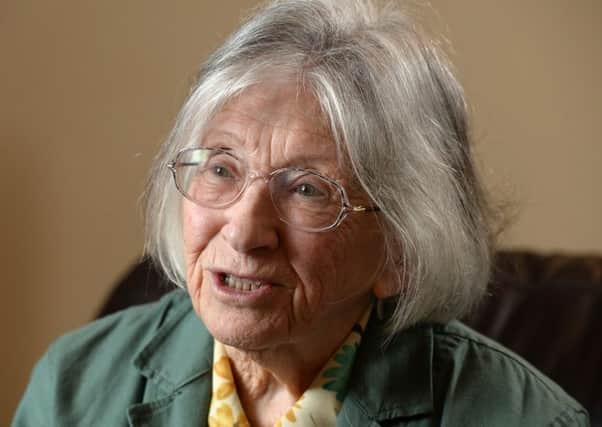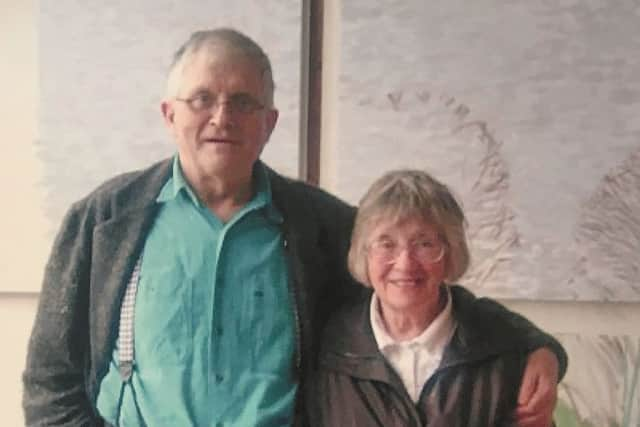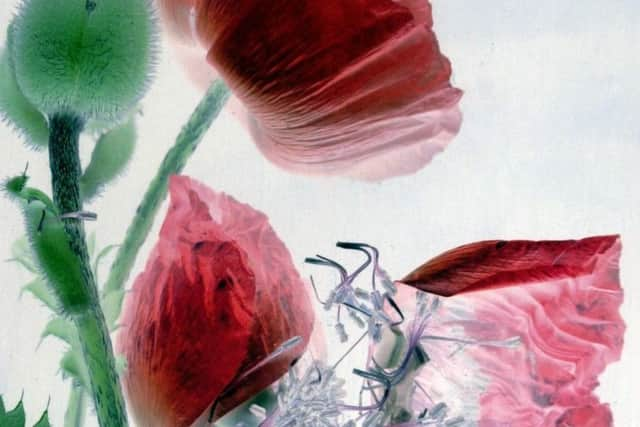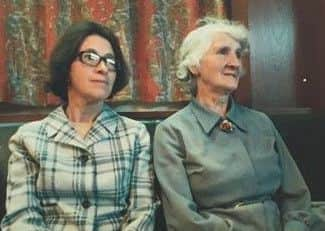Margaret Hockney - stepping out of the shadows with a family portrait


Some mothers and daughters are best friends. For others, though, the relationship can be a fraught one.
Margaret Hockney fell into the latter category. “My mother was in my head for pretty well every day from the age of ten until shortly after she died fifty years later. I used to think that I was the only daughter in the world who did not relate well with her mother. Of course I did learn that was not the case, but the emotional conflict stayed with me.”
Advertisement
Hide AdAdvertisement
Hide AdIt was this strained relationship that prompted Margaret, now 82, to write her memoir My Mother is not Your Mother which she is launching at a special event next week at Salts Mill, near Bradford.


The surname ‘Hockney’ is known around the world, but while David is recognised as one of the greatest artists alive today, few people know much about his older sister, Margaret.
The book charts her story as she forged a career as a nurse taking her to places like Australia and Africa, her battle against creeping deafness, and the long shadow cast by her mother.
“My mother used to write diaries and there was an awful lot of memory material and she also kept all the letters I sent home. After she died I found these suitcases with all this stuff in and I thought there was enough to make a book.” She began making copies of the diaries and letters and set about writing the book.
Advertisement
Hide AdAdvertisement
Hide AdMargaret was born in Bradford in 1935, the middle of five children born to Kenneth and Laura Hockney – and the only girl. Her father was a conscientious objector, which led to unemployment, tensions with neighbours and made the family feel outsiders. Margaret had sympathy for her father but struggled for decades with her religiously zealous mother.


Margaret admits that her mother – who features in David’s iconic double portrait My Parents – was hard to please. “She was an amazing woman in many ways but she was never quite satisfied and she always wanted more from us.”
Not hearing the call of God made Margaret feel lonely, guilty and inadequate. “She was very religious and I couldn’t seem to relate to her. She used to say ‘Jesus first, others in between, and yourself last.’ When I was a kid I took that seriously and always put myself last and it was hard to shake off.”
The siblings grew up in Bradford during the war, the family escaping the worst of the Blitz, and Margaret left school with no great plans.
Advertisement
Hide AdAdvertisement
Hide AdShe got a job working for the Yorkshire Electricity Board which inadvertently changed her life. “One of the girls was leaving to become a nurse and the more she talked about it – you wore a uniform and worked at weekends – the more I liked it because it would mean I couldn’t go to church, and you lived away from home, so it all appealed to me.”


She started training to become a nurse in 1953 and became part of the fledgling NHS. It offered a chance to escape and in the early 60s she went to work as a midwife in Australia. But wherever she went, she felt hounded by her mother’s constant letters begging for news and imploring her to come home. This eventually took its toll and she had a nervous breakdown, spending nine months in hospital in Australia. “My mother’s letters really got to me and I realise now it was a kind of emotional blackmail.”
After recovering she went to work in New Zealand for a spell and it was here that she discovered the extent of her brother David’s growing fame. “I was staying in a Maori hostel and the governor general’s wife visited and we were all introduced to her and when she heard my name she said, ‘I know an English artist called Hockney.’ Well I was amazed and so was she, because what are the chances of us meeting in a Maori hostel...”
Margaret returned to Yorkshire in 1964 and got a job once again as a midwife. It was around this time, though, that she first started noticing problems with her hearing and was told by doctors that she was slowly going deaf.
Advertisement
Hide AdAdvertisement
Hide AdDespite this she was passed to fit to work as a nurse in Zambia where she spent three years before returning home once again. In the end she spent 30 years working as a hospital nurse before her hearing problems finally forced her to quit.


Not yet 50, she still needed to earn a living and after retraining she set up her own herbal medicine business which she ran for 14 years before retiring in 1998.
The following year Margaret’s mother died at the age of 98. Her mother lived with her and her close friend, the artist Ken Wathey, in Bridlington for the last few years of her life.
Margaret says she bears no animosity towards her mother but admits her death felt like a weight being lifted off her shoulders. “On the day she died I was 63 years old. My new computer was delivered with internet access on the same day. It was a new start in my life.”
Advertisement
Hide AdAdvertisement
Hide AdAlways eager to learn, Margaret immersed herself in cyberspace, teaching herself how to use computer software and, as her deafness became worse, the tech world became her ears.
She had always been interested in art and photography but it was only when she began developing her own scanning technique – so called ‘scanographs’ – using real flowers to create unique images that appear almost like fine ink drawings, that she became an artist in her own right.
“I can’t draw and I can’t paint and even now when I sell these scanographs some people can’t quite grasp that I haven’t actually painted them. But I suppose it makes me a bit of an artist.”


Her work has been exhibited in galleries across Yorkshire and she’s even influenced her brother, showing him what could be done with a scanner and encouraging him to experiment with digital cameras.
Advertisement
Hide AdAdvertisement
Hide Ad“I showed him how to use Photoshop because it was much faster than when he’d first tried it. I showed him how to scan some of his sketchbooks and he got quite excited by that and before long he was doing drawings on the computer.”
David is an inescapable presence in the book but Margaret insists his fame never changed their relationship and nor did it with any of the siblings. “We were all born within a decade of each other and there’s never been any rivalry in the family.”
Following their mother’s death he became a regular visitor to her old home on the Yorkshire coast. “We had a big house in Bridlington so that anyone could come and stay. David loved it and he and Ken would go and paint in the loft studio. After my mum died he kept coming to see Ken and I, and after Ken died that’s when he really came back and started painting those great Yorkshire pictures.”
She would join him occasionally on his day trips. “When he’s painting no one talks to him because he doesn’t talk while he’s painting, he’s in a world of his own. But it was fun spending time with him.”
Advertisement
Hide AdAdvertisement
Hide AdAs for her memoir, she feels it’s a chapter of her life that she can now close the door on. “I’m glad I’ve written the book, there’s a sense of freedom at having done it. I can’t imagine I’ll write another one, but I suppose you never know, do you?...”
My Mother is not Your Mother is published by Salts Estates Ltd, priced £14.99. It is available exclusively from Salts Mill Book Shop or via saltsmillshop.co.uk
Margaret will launch her book at Salts Mill on October 31 with an author talk and light lunch. Tickets cost £10. Call 01274 531163.